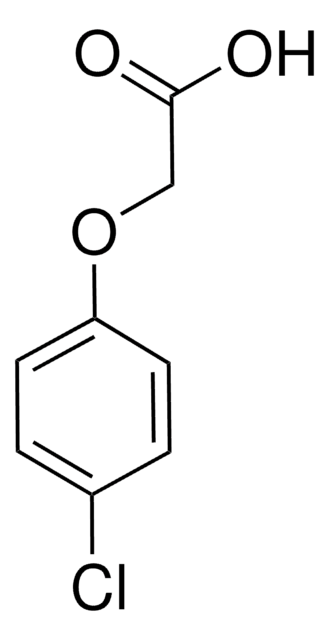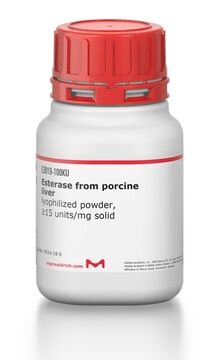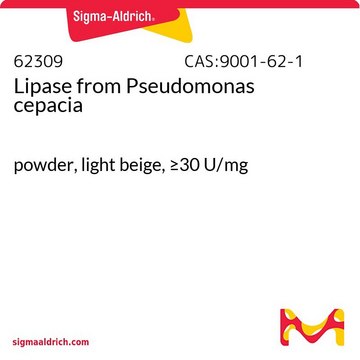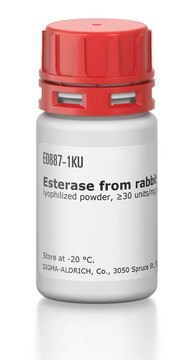C1403
Cholesterol Esterase from Pseudomonas sp.
lyophilized powder, ≥200,000 units/g protein
Synonym(s):
Cholesterol Esterase from Pseudomonas fluorescens, Sterol-ester acylhydrolase
About This Item
Recommended Products
form
lyophilized powder
Quality Level
specific activity
≥200,000 units/g protein
mol wt
~300 kDa
composition
protein, ≥40% biuret
storage temp.
−20°C
Looking for similar products? Visit Product Comparison Guide
Application
Biochem/physiol Actions
Physical properties
Isoelectric point: 5.9 ± 0.1
Michaelis constants: 5.4 x 10‾5M (Linoleate), 6.6 x 10‾5M (Oleate)
3.7 x 10‾5M (Linolenate), 1.5 x 10‾4M (Palmitate)
1.2 x 10‾4M (Myristate), 2.3 x 10‾5M (Stearate)
Inhibitors: Hg++, Ag+, ionic detergents
Optimum pH: 7.0 − 9.0
Optimum temp: 40°C
pH Stability: pH 5.0 − 9.0 (25°C, 24hr)
Thermal stability: Below 55°C (pH 7.5, 10min)
Unit Definition
Signal Word
Danger
Hazard Statements
Precautionary Statements
Hazard Classifications
Resp. Sens. 1
Storage Class Code
11 - Combustible Solids
WGK
WGK 1
Flash Point(F)
Not applicable
Flash Point(C)
Not applicable
Personal Protective Equipment
Certificates of Analysis (COA)
Search for Certificates of Analysis (COA) by entering the products Lot/Batch Number. Lot and Batch Numbers can be found on a product’s label following the words ‘Lot’ or ‘Batch’.
Already Own This Product?
Find documentation for the products that you have recently purchased in the Document Library.
Customers Also Viewed
Articles
Cholesterol undergoes esterification to improve transport. Cholesterol esters are more easily packaged into the interior of lipoproteins - increasing the quantity that can be readily transported in the blood stream.
Protocols
Protocol for Assay Procedure for Cholesterol Esterase
Our team of scientists has experience in all areas of research including Life Science, Material Science, Chemical Synthesis, Chromatography, Analytical and many others.
Contact Technical Service
















